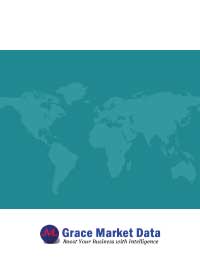Europe pediatric medical devices market was valued at $7,260.9 million in 2021 and will grow by 7.2% annually over 2021-2031, driven by the rising incidence of chronic disorders among children due to unhealthy habits and a rising obese pediatric population, the availability of a wide range of pediatric medical devices, initiatives by governments and favorable reimbursement scenario, and emerging innovative products due to technological advancements.
Highlighted with 30 tables and 43 figures, this 99-page report “Europe Pediatric Medical Devices Market 2021-2031 by Product (IVD, Cardiology, Anesthetic & Respiratory Care, Neonatal ICU, Monitoring, Diagnostic Imaging, Telemedicine, Others), Age Group (Neonates, Infants, Children, Adolescents), Setting (Hospitals, Diagnostic Laboratories, Pediatric Clinics, ASCs, Others), and Country: Trend Forecast and Growth Opportunity” is based on a comprehensive research of the entire Europe pediatric medical devices market and all its sub-segments through extensively detailed classifications. Profound analysis and assessment are generated from premium primary and secondary information sources with inputs derived from industry professionals across the value chain. The report is based on studies on 2018-2021 and provides forecast from 2022 till 2031 with 2021 as the base year. (Please note: The report will be updated before delivery so that the latest historical year is the base year and the forecast covers at least 5 years over the base year.)
In-depth qualitative analyses include identification and investigation of the following aspects:
- Market Structure
- Growth Drivers
- Restraints and Challenges
- Emerging Product Trends & Market Opportunities
- Porter’s Fiver Forces
The trend and outlook of Europe market is forecast in optimistic, balanced, and conservative view by taking into account of COVID-19 and Russia-Ukraine conflict. The balanced (most likely) projection is used to quantify Europe pediatric medical devices market in every aspect of the classification from perspectives of Product, Age Group, Setting, and Country.
Based on Product, the Europe market is segmented into the following sub-markets with annual revenue ($ mn) for 2021-2031 included in each section.
- IVD Devices
- Cardiology Devices
- Anesthetic and Respiratory Care Devices
- Neonatal ICU Devices
- Monitoring Devices
- Diagnostic Imaging Devices
- Telemedicine
- Other Products
Based on Age Group, the Europe market is segmented into the following sub-markets with annual revenue ($ mn) for 2021-2031 included in each section.
- Neonates
- Infants
- Children
- Adolescents
By Setting, the Europe market is segmented into the following sub-markets with annual revenue ($ mn) for 2021-2031 included in each section.
% of overall revenue by Setting
- Hospitals
- Diagnostic Laboratories
- Pediatric Clinics
- Ambulatory Surgical Centers (ASCs)
- Other Settings
Geographically, the following national/local markets are fully investigated:
- Germany
- UK
- France
- Spain
- Italy
- Netherlands
- Rest of Europe (further segmented into Russia, Switzerland, Poland, Sweden, Belgium, Austria, Ireland, Norway, Denmark, and Finland)
For each key country, detailed analysis and data for annual revenue ($ mn) are available for 2021-2031. The breakdown of national markets by Product, Age Group and Setting over the forecast years are also included.
The report also covers current competitive scenario and the predicted trend; and profiles key vendors including market leaders and important emerging players.
Selected Key Players:
- Atom Medical Corporation
- Baxter International, Inc.
- Elektro-Mag
- Fritz Stephan GmbH
- GE Healthcare (GE Company)
- Hamilton Medical
- Koninklijke Philips N.V.
- Medtronic Plc
- Ningbo David Medical Device Company Ltd.
- Novonate Inc.
- Phoenix Medical Systems Pvt Ltd.
- Stryker Corporation
- Trimpeks
- TSE Medical
(Please note: The report will be updated before delivery so that the latest historical year is the base year and the forecast covers at least 5 years over the base year.)



